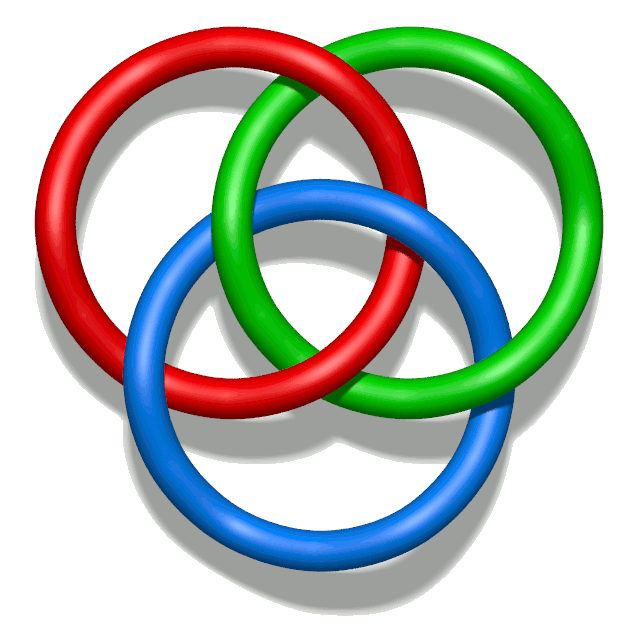Mathematics BSc
Course description
2013.
Course description
2013.
Algebra 3
| Hours lect+pc |
Credits lect+pc |
Assessment | Specialization | Course code lect/pc |
Semester | Status |
|---|---|---|---|---|---|---|
| 2 + 2 | 2 + 3 | exam + term grade |
pure math. | mm1c1al3m mm1c2al3m |
3 | compulsory |
Course coordinator
| Strong | Weak | Prerequisites | |
|---|---|---|---|
| Practice class | |||
|
Strong:
Algebra2L
(mm1c1al2)
| |||
|
Strong:
Number theory1L
(mm1c1se1)
| |||
| Lecture | |||
|
Weak:
practice class
| |||
Prerequisites
Classical and linear algebra, elementary number
theory.
Course objectives
Present some basic notions and the point of view
of abstract algebra.
Literature
- D. S. Dummit, R. M. Foote: Abstract algebra. Wiley, 2004.
Syllabus
- Groups. Additive and multiplicative group of a ring. Matrix groups. Symmetric and alternating groups. Cycle decomposition of permutations. The Klein four-group, the quaternion group, dihedral groups.
- Subgroups. Lagrange’s Theorem, coset, index of a subgroup, the number of left and right cosets coincide. Cyclic subgroups. The order of an element divides the order of the group. Application: Euler-Fermat Theorem. Groups of prime order. Subgroups of cyclic groups. The general notion of generated substructure (e.g., subgroups, subspace, subring, ideal, etc.), its existence. Elements in the generated subgroup in the general case, and in the case of commutative groups. Every finite symmetric group can be generated by two elements.
- Permutation groups, degree, orbits, stabilizer subgroups, transitivity. Number of symmetries of regular polyhedra. Group actions. Cayley’s Theorem.
- Isomorphism, methods for determining isomorphism. Isomorphism types of cyclic groups. Groups of small order. Homomorphisms, image and kernel. Normal subgroups, quotient groups, natural homomorphism, Homomorphism Theorem. Subgroups and normal subgroups in the quotient group, Isomorphism Theorems. Element orders in the quotient group. Every subgroup of index 2 is normal. Conjugations are automorphisms. The action of the group by conjugations, conjugacy classes. A subgroup is normal iff it is the union of conjugacy classes. Simple groups, examples.
- Direct product of groups, its inner characterization for finitely many factors. Discrete direct product (direct sum). Element orders in the direct product, condition for cyclicity of the direct product. The Fundamental Theorem of Finite Abelian Groups (uniqueness: without proof).
- Free groups. Every group is the quotient group of a suitable free group. Dyck’s Theorem. Presentation of groups by generators and defining relations.
- Normal series, composition series. Jordan-Hölder Theorem. Solvable groups. Composition series of the symmetric groups. Semidirect products.
- Centralizer and normalizer of elements and subgroups. Every p-group has a nontrivial center, hence it is solvable. Every group of prime-square order is abelian. Sylow subgroups, Sylow’s Theorems.
- Rings. Subring, homomorphism, ideal, quotient ring, Homomorphism Theorem. The field of complex numbers as a quotient ring. Embedding into a ring with unity. Left and right ideals. The generated ideal in commutative rings with unity. Equivalent forms of the ascending chain condition. Every finite ring without zero divisors is a field. Simple rings, every matrix ring over a division ring is simple. Left and right annihilator. Rings without nontrivial left ideals. Consequence: The quotient ring of a commutative ring with unity over a maximal ideal is a field.
- Euclidean domains, these are principal ideal domains. A domain has unique factorization iff its principal ideals satisfy the ascending chain condition and every irreducible element is prime. Consequence: Principal ideal domains, in particular, Euclidean domains have unique factorization.
- Construction of the field of fractions of a domain. Additive order of elements in a domain, characteristic of a domain. Prime fields. Ordered domains, cone of positivity, condition for orderability. The division ring of quaternions.
- Lattices. Partially ordered sets. Least upper bound, largest lower bound, lattice. Definition of lattices through axioms on the operations join and meet. The equivalence of the two definitions. Modular and distributive lattices. The lattice of normal subgroups and the lattice of submodules are modular. Stone’s Theorem for distributive lattices. Complement in a lattice. Boole algebras.
- Universal algebra. General algebraic structures, type. Subalgebra, homomorphism, direct product. Identity, variety. Free algebras. Birkhoff’s Theorem.
